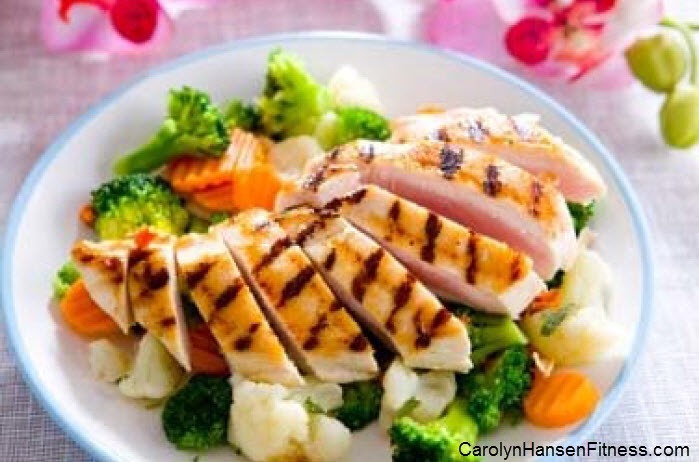 Whenever you eat a meal, a complicated series of chemical reactions takes place that converts the food you eat into energy your body can use.
Whenever you eat a meal, a complicated series of chemical reactions takes place that converts the food you eat into energy your body can use.
Some of these reactions cause your body to store fat and others cause it to release fat.
When it comes to fat loss, the conversion of carbohydrates into glucose (blood sugar) is very important. If your blood sugar level gets too high your body releases a “fat storing” hormone called insulin to clear the excess sugar from the blood stream and guess where it goes? Straight to your mid-section or other fat storage depots in your body.
There are distinct differences between Fast Carbs and Slow Carbs:
Fast Carbs:
generate faster increases in blood sugar levels
provide higher total calories with less fiber per serving
are found in highly refined and processed foods (and foods made with processed grains and sugars)
are usually low in protein and fiber and high in starchy foods (potatoes and rice)
are found I most fruits (the exceptions are tomatoes, avocados, berries and cherries)
Slow Carbs:
Generate slower and smaller increases in blood sugar levels
provide lower total calories and more fiber per serving
are found in most vegetables and legumes (peas, beans and lentils – fibrous type foods)
are found less often in processed or refined foods but are richer in fiber and closer to their natural state
are higher in protein and fiber with little to no starch
There are three important factors that determine whether a meal will put your body into a favorable fat burning mode or whether it “spikes” insulin levels and send it into fat storage mode.
Factor One – The kind of carbohydrates you eat (Fast or Slow Carbs)
Different types of carbohydrates convert into glucose at different rates and the faster a carbohydrate converts to sugar in your body the more likely it is to increase insulin levels to signal fat storage.
Factor Two – When you eat a meal your body reacts to the makeup of all the calories in all the macro-nutrients in the entire meals so how you combine them is important for you to achieve your fat loss goals. As an example: when combining your Fast Carbs (breads, wines, pastas etc.) with high fiber Slow Carbs (vegetables), proteins and healthy fats you can actually slow down the conversion of the fast carbs in the meal. This helps keep blood sugar levels from rising too quickly and causing a “spike” which triggers a surge of insulin.
Factor Three – When you consume too many calories from carbohydrates or simple eat too many calories overall you body’s systems get overwhelmed. When more sugar and more fuel (calories) are provided than the body is able to use in the short term, the body has no choice but to release insulin and store the excess calories as fat.
THE IMPORTANCE OF FIBER
It’s also important to understand the role that fiber plays and how it helps you lose body fat.
Fiber is the indigestible portion of your food and veggies are generally loaded with it. Even though it passes through your body as waste, it is vitally important to overall healthy. It aids in slowing down the conversion of carbohydrates to glucose in the body which means that it is of critical importance in the fat loss war.
The higher the fiber content of a given food the less impact it has on your blood sugar levels because fiber reduces the digestibility of carbohydrates and therefore limits the amount of sugar that can be easily extracted.
Bottom line is this: you should not eat in a way that allows your blood sugar to get so high that your body has to release a flood of insulin. You need to eat in a way that keeps your blood sugar and insulin levels low and stable so that your body stays in fat burning mode.
The healthiest way to enjoy your carbs is to eat them as part of a healthy, balanced meal.
Remember, your body must receive the nutrients it needs to drive its engine properly, otherwise it keeps asking for food.
It’s an endless cycle of false hunger, unhealthy food cravings, eating more…especially of the wrong foods, getting fatter, not feeling satisfied and starting it all over again.
It’s not more food your body is craving…its quality, fresh, nutrient dense food it’s craving.
For recipes that promote health and eliminate gluten, sugar, white flour and unhealthy fats, check out “Healthy Raw Snacks.”
You’ll find 100 raw snack and treat recipes that promote health not subtract from it. They are delicious and sure to delight your whole family.

